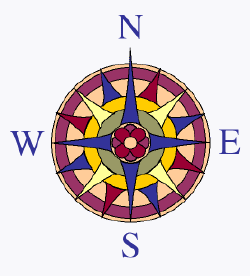
The Non-violence Grid
 |
The Non-violence Grid
|
|
Objective
Time
Rules
|
 |
The Nonviolence Grid is a technique used by the Fellowship of Reconciliation in the Peacemaker Training Institute. This exercise allows students to explore their feelings toward various social issues while physically moving themselves throughout the room, experiencing their opinions in spatial proximity to their classmates. The game begins by placing four large cards on the ground in the cardinal directions (N,S,E,W). The North and East cards have large "plus" symbols, and the West and South cards have "minus" symbols on them. The North/South axis represents "better for society" and "worse for society" and the East/West axis represents "more violent" and "less violent".
Students should help the teacher to move desks to the periphery of the classroom so there is enough room to move. The teacher first tells the students to stand in the middle of the room at the start of the game. The teacher may move around the room as well but refrain from participation. The teacher reads out the following "opinion statements" and then asks students to move in the room to the place on the grid which best fits their feelings toward the statement. For example:
Teacher: "If a storefront is vandalized, is it better or worse for society, more or less violent?"
The students then move to their places on the grid. The teacher asks various students to justify why they are standing where they are. The teacher may spend between 3-5 minutes on each question, and students are allowed to move if they change their minds. Students may volunteer their answers or the teacher may call on them to answer.
The following questions are samples, but teachers are encouraged to invent other questions, especially ones which are relevant or more age-appropriate in their classrooms and/or schools:
Processing the Game
Since this game requires a great deal of physical and verbal participation, it
is important to remember that some students process their learning very
differently. A written response from the students may be assigned, as well as
oral discussion of the following questions.
1. How did you feel about having other people know literally where you stand on
different issues?
2. How did it feel to see that everyone did not agree on the answers?
3. What do you think this game represents in a larger society?
4. Should everyone agree on the answers to these questions?
5. What was difficult about this game?
6. What did you learn about yourself in this game?
7. What did you learn about your classmates in this game?
8. Are there any situations where the outcome is not clear-cut and well-defined?
9. Create your own questions.
© 2002 by Nuclear Age Peace Foundation - WagingPeace.org
|
|
|||||||
|
home • schools • top 10 actions • about us |
|||||||
copyright © www.worldpeace.org.au 2001-2025
 |
|
 |